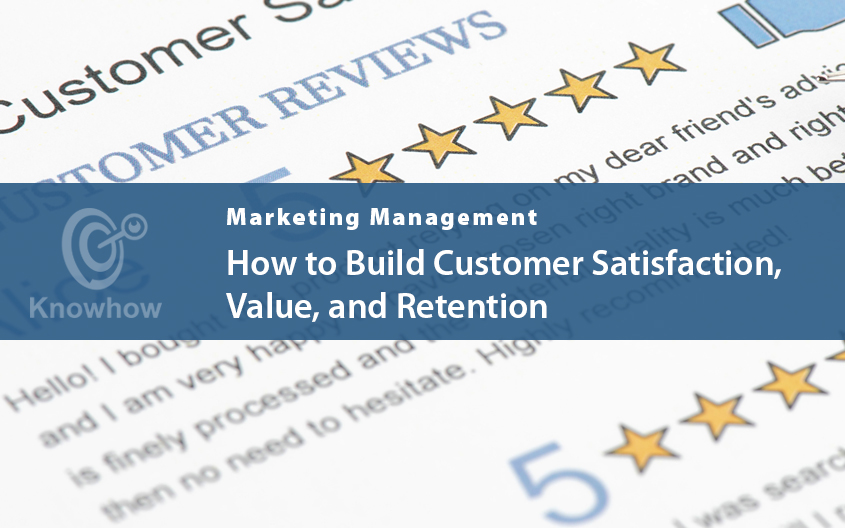
The competition in the market of today is incredible. Companies are racing to the top, and they are not slowing down. And in such a world, companies have to focus on their customers more than ever to emerge victorious. Understanding the process of how to build customer satisfaction and building procedures, as well as the policies around it is a great way to garner brand loyalty.
Companies should ask themselves why exactly should a customer choose their products. After all, there are a lot of products on the market, and the customer has to choose only one.
Well, according to various studies that took place over the past few decades, customers will usually purchase the products that they perceive as being the most valuable. So it seems to be imperative for companies to calculate the perceived value of their products.
Unfortunately, that is not an easy task. The value in question is a combination of several factors on the emotional level. Those factors include the functional image of the product, the effectiveness of sales personnel, and the brand image. And companies should look to convert that value to the cost of the product.
After all, the decisions of the customers usually come after the customer considers the total cost of the product and puts it against the perceived value of it. However, perceiving products as being valuable is simply not enough to reach customer satisfaction. Namely, products are derived as satisfactory, only if they perform the way the customer expect them to.
And if they do so, customers are very likely to purchase those products again. More importantly, customers are also likely to spread the good word of mouth regarding the product. That is why companies should always aim for total satisfaction. So, if the satisfaction amounts to meeting the expectations, it is crucial to understand the expectations of the target audience. Once companies figure that out, they can start working on the product delivery that is in line with the customer expectations.
Business Practices
Achieving the state of customer satisfaction is not an easy task. So in order to do it, companies have to incorporate various good business practices. These practices should be built around stakeholders, processes, resources, and organisation.
In layman’s terms, stakeholders are the people who have an interest in the company. Namely, the stakeholders of a company are its employees, distributors, suppliers, and of course, customers. In the earlier forms of the market, keeping the shareholders happy was simply enough. However, nowadays, all levels of stakeholders have to be happy in order for shareholders to profit. So companies have to find ways to generate as much value as possible for each and every stakeholder.
The activities of a company consist of primary and secondary activities. Primary activities include obtaining raw materials, delivering products, marketing campaigns, and quality service. Secondary activities are the activities that operate in the background of the company. Those activities fall under the functional departments.
Those departments are the technological department, the human resources, finance department, and other similar teams.
We should mention that the consumers in the modern age are aware of their needs at a deeper level. Moreover, they are a lot more in touch with their expectations. And that is making them a lot more difficult to please. Marketing campaigns that highlight product differentiation can pull customers in. However, the hard part is customer retention.
The next potential issue companies might face is the churning effect. If customers don’t need or don’t want to, they won’t be repurchasing the products. If companies can identify the causes of the churning, they can work on removing them.
Customer Relationship Management (CRM)
With that in mind, companies have to develop new procedures and policies with the goal of retaining customers. One of the most important aspects when it comes to keeping customers happy is the customer relationship. A strong CRM team can turn buyers into loyal customers. And it can turn loyal customers into advocates for the company. Some companies do so by having very efficient policies and some offer financial benefits to loyal customers. Some of those benefits include free products or discounts for returning buyers.
The main goal of almost all companies is to turn a profit. For that reason, companies have to identify profitable consumers. And if they can’t identify the existing base of profitable customers, they can work on creating it. For customers to be profitable, they have to provide a significant revenue for the company. At the very least, the revenue should outweigh the expenses required to retain those customers.
Related content:
Marketing Management Knowhow – learn more about marketing with our collection of educational articles.
From business promotional printed pens, canvas bags, corporate mugs, water bottles through to post-it pads, recycled printed gifts, and corporate umbrellas, here at GoPromotional we believe that you are sure to find the perfect printed business products to help successfully market your brand.
If however, you require further information or have any specific questions, don’t hesitate to give a member of our experienced team a call on 0800 0148 970 or simply email us today.






